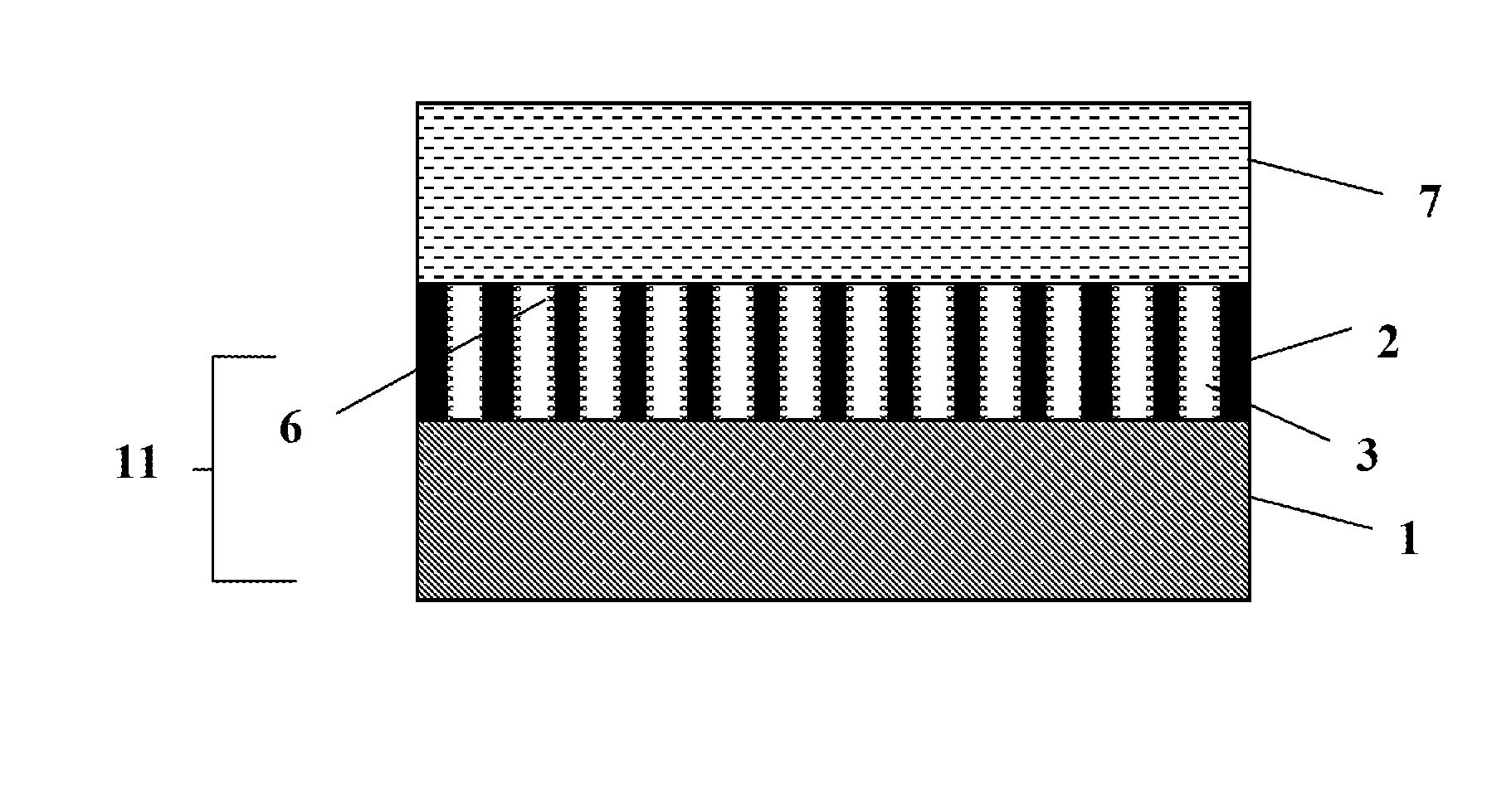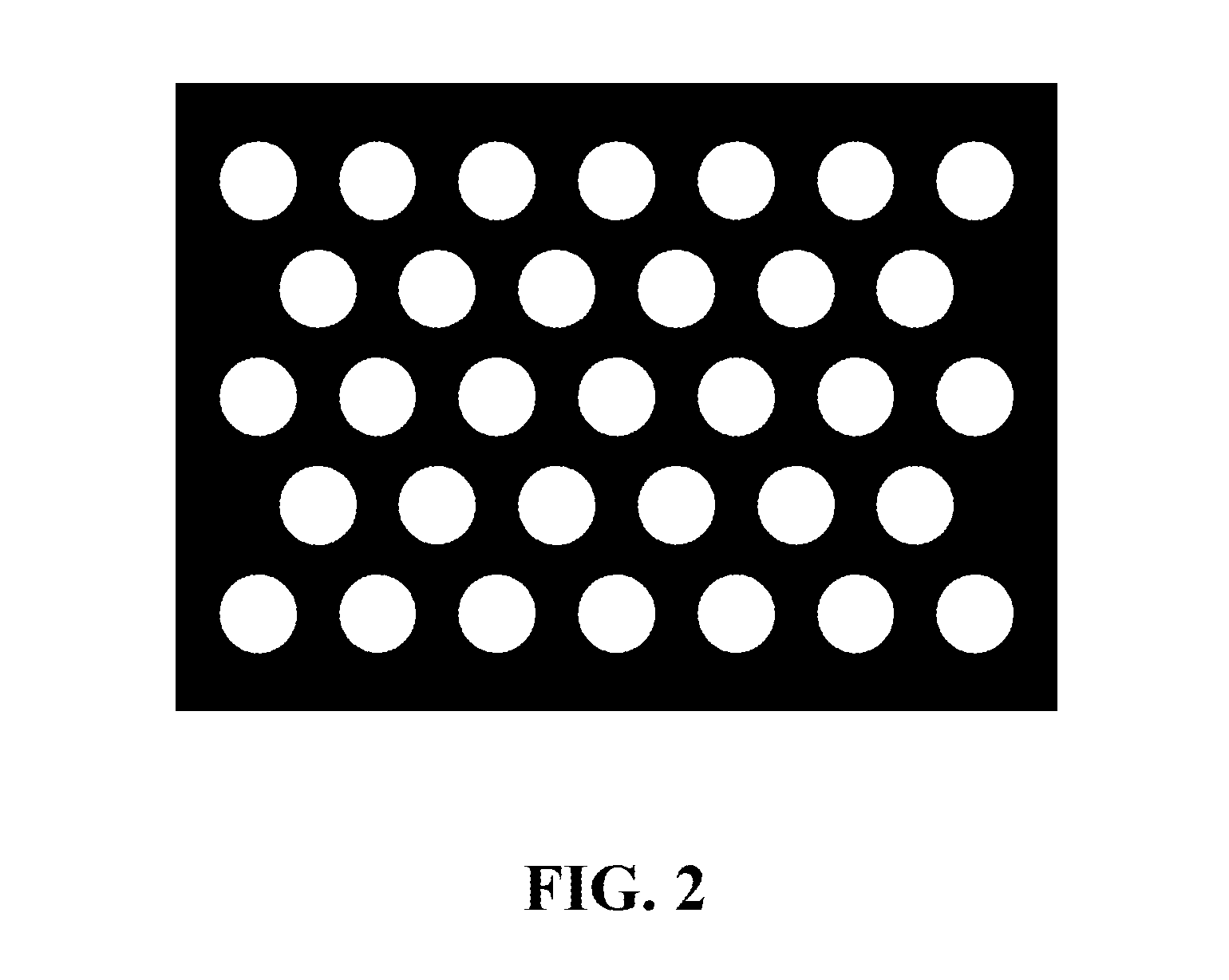Unique battery with a multi-functional, physicochemically active membrane separator/electrolyte-electrode monolith and a method making the same
a technology of physicochemically active membrane separator and activated membrane, which is applied in the direction of non-aqueous electrolyte cells, cell components, cell component details, etc., can solve the problems of flammable liquid electrolyte contained in lithium-ion batteries, prone to leakage, and difficult manufacturing
- Summary
- Abstract
- Description
- Claims
- Application Information
AI Technical Summary
Benefits of technology
Problems solved by technology
Method used
Image
Examples
example i
Membrane Example I
Base Membrane / Electrode monolith w / Aluminum Electrode
[0074]IA.—Aluminum strips (6.0 cm×1.5 cm×0.15 mm) of 98% purity were immersed in 0.3 molal oxalic acid maintained at 276 K and anodized at 40 VDC, forming top and bottom transparent monolithic surface membranes having a metal (or metal alloy) interior and porous metal oxide (or metal alloy oxide) faces. The films were washed with deionized water, dried at 383 K for 15 minutes in air, and cooled under dry nitrogen. Removal of water coating the pore walls was accomplished by heating the membranes to 330 K under vacuum for two hours, or heating the membranes to 700 K under dry nitrogen.
[0075]IB.—Square pieces of aluminum foil (2.0 cm×2.0 cm×0.10 mm) of 99.999% purity were coated on one side with nail polished (to protect the covered side from anodization) and dried and then immersed in 0.3 molal oxalic acid maintained at 276 K and anodized at 40 VDC for three days until a transparent porous membrane was formed on th...
example ii
Membrane Example II
Salt-Coated PAMSEE Monolith: Aluminum Electrode
[0080]IIA.—The pores in the AAO portion of the membrane / electrode monolith are coated with organic salts, such as lithium triflate and lithium dodecyl sulfonate, by the application of solutions of these salts in THF, followed by solvent evaporation at elevated temperatures in a nitrogen atmosphere. The PAMSEE monolith is heated by laying it flat on a heating mantel. The application of the salt solutions is done drop wise on the AAO face of the PAMSEE monolith.
[0081]IIB.—The pores in the AAO portion of the membrane / electrode monolith are coated with inorganic salts, such as lithium iodide and lithium bromide, by the direct application of these salts to the AAO face of the monolith and heating the monolith under nitrogen gas in a furnace to 400-500K or to the melting point of the salt. The monolith can be dried at 773 K in air and then coated with molten LiBr at the same temperature. The salt coating activates the base ...
example iii
Membrane Example III
Polymer Electrolyte and Salt-Coated PAMSEE Monolith: Aluminum Electrode
[0084]The pores 3 and outer face 5 of the second side 2 of an AAO portion of the PAMSEE monolith (see FIG. 1A) is coated with a layer of a polymer electrolyte to form a soft ion conducting interface between the outer face 5 and an electrode. The polymer electrolyte is composed of PEO and lithium triflate and has an oxygen to lithium ion ratio of 8:1, and is made by a well-know procedure. The pore walls 3 can be coated by placing the PAMSEE monolith on the surface of a hot plate and heating to 400 K in a dry nitrogen gas atmosphere. The polymer electrolyte can be smeared onto the surface of the AAO portion of the PAMSEE monolith and allowed to permeate the pores for a period of 10 minutes. Any excess polymer on the top (and bottom) face of the AAO portion of the PAMSEE monolith is removed from the surface leaving a thin surface layer. Complete and uniform coating of the pores with polymer elect...
PUM
| Property | Measurement | Unit |
|---|---|---|
| Thickness | aaaaa | aaaaa |
| Thickness | aaaaa | aaaaa |
| Nanoscale particle size | aaaaa | aaaaa |
Abstract
Description
Claims
Application Information
 Login to View More
Login to View More - R&D
- Intellectual Property
- Life Sciences
- Materials
- Tech Scout
- Unparalleled Data Quality
- Higher Quality Content
- 60% Fewer Hallucinations
Browse by: Latest US Patents, China's latest patents, Technical Efficacy Thesaurus, Application Domain, Technology Topic, Popular Technical Reports.
© 2025 PatSnap. All rights reserved.Legal|Privacy policy|Modern Slavery Act Transparency Statement|Sitemap|About US| Contact US: help@patsnap.com



